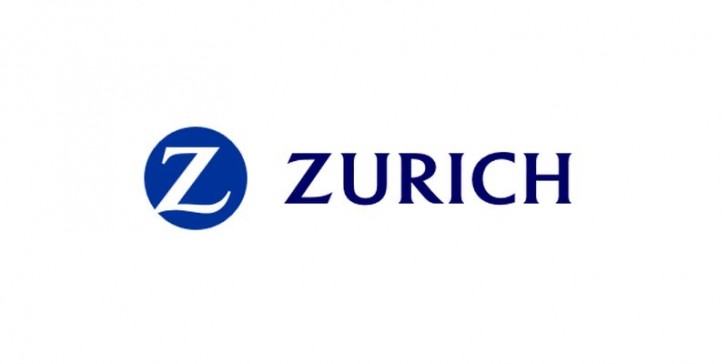Zurich Versicherung warnt vor Nanorisiken

Neben grossem Potential identifiziert die Zurich im Bereich der Nanotechnologien auch Versicherungsrisiken, nämlich in den Bereichen Arbeitgeber- und Produkthaftpflicht, Organhaftung und Umweltschädigung. Im nachfolgenden Artikel (Zurich Insider, in englischer Sprache) erläutert die Zurich, warum die Versicherungsindustrie die Nanotechnologie als „Emerging risk“ einstuft.
Nanotechnology is a relatively new area of science, which utilises particles and structures one hundred-thousandth the thickness of a piece of paper, and offers the potential to make huge advances in medicine, electronics and even pollution control.
Their characteristics – some materials become stronger, exhibit greater electromagnetic qualities or are better at conducting heat or electricity at the nanoscale – make the technology truly revolutionary, but the real associated perils of nanotechnology are yet to be fully defined.
Sectors such as information technology, energy, environmental science, medicine, homeland security, food safety, sporting equipment and transportation, among many others, have already embraced nanotechnology and it is used in products as diverse as toothpaste, beer and cheese.
However, as the technology evolves, so do the risks. Nanoparticles are so small they could be inhaled, swallowed and absorbed through the skin.
“Nanoparticles display a lot of bizarre qualities and we still don’t know anything about the long-term effects of these particles if they have accumulated in the body or conglomerated into larger particles,” said Ian Price, Senior Casualty Underwriter at Zurich.
Then there is the Trojan horse possibility where even If the nanoparticles themselves are harmless, because of their small size they could disguise or assist in the migration of other particles containing toxins past a human body’s natural defence, which could then accumulate in vital organs.
Engineered nanomaterial use is now very widespread and the risks largely unknown. At some point a loss will be identified and the change in liability exposure resulting from this change in knowledge could be very significant
These tendencies, many of which are so far unquantifiable from an insurance perspective, mean a lot of the risks associated with nanotechnology may still not be apparent.
The main insurance risks surrounding nanotechnology mainly focus on employers’ liability, product liability, environmental impairment and directors’ and officers’ liability.
Emerging risk
Already a multi-billion dollar industry, nanotechnology has been labelled an emerging risk by the insurance industry as scientific studies continue to explore safety concerns, while although oversight of the sector is on the rise, regulators still trail in the wake of the technology.
“The risks associated with nanoparticles are not well known outside of specialist sciences and this is a problem,” said Dr Andrew Auty, a Director at Re: Liability (Oxford) Ltd, a provider of information and guidance to UK liability insurers.
“Most people have an intuitive sense of risk based on precedent, analogy, trusted sources and meaning. With engineered nanomaterials, there is little meaningful precedent and trusted sources are hard to find.
“Regulators, insurers and other risk managers are thus unable to produce simple generally applicable messages on engineered nanomaterial risk.”
Another issue is that nanoparticle inclusion in products and processes need not actually be known by the producer or user, while there are no common reporting standards that can identify exactly what type of nanoparticle is in each product – all of which is critical to weighing up the risks.
“Risk management measures which should be adequate for one engineered nanomaterial may not be adequate for even a trace of another,” added Dr Auty.
Insurers and industry experts are, thus, treading cautiously especially due to its potentially adverse affects on human health – especially in terms of food ingredients, cosmetics, construction materials, fuels and lubricants, pharmaceuticals and surgical implants.
“My biggest concern is retrospective risk, closely followed by rapidly changing risk,” said Dr Auty. “Engineered nanomaterial use is now very widespread and the risks largely unknown. At some point a loss will be identified and the change in liability exposure resulting from this change in knowledge could be very significant.
“With rapidly changing risk, you could go from ‘possible’ to ‘plausible’ to ‘probable’ with a couple of years and implied liability exposure goes from none to maximum in the same timescale. Risk management measures may find it hard to keep up. Of particular interest under rapidly changing risk are carbon nanotubes and silica.”
Then there is the impact of nanotechnology on the environment. There is a growing debate regarding to what extent industrial and commercial use of nanomaterials will affect organisms and ecosystems.
Potential benefits
However, alongside the potential risks, there are rewards. There are instances where the technology is seen primarily as a benefit. One example is sporting equipment, which has become much lighter and more durable due to the use of nanotechnology – some of its many qualities.
“Nanotechnology is used in tennis racquets, cycling helmets and bicycle frames, but the nanomaterial is sold in bonded form,” said Ian at Zurich. “The atomic arrangement is incredibly strong so it is extremely hard to break, which means there should be no exposure to free nanoparticles.”
However, despite all the fears, like with most emerging technologies it is hoped that there is a period of growing pains before the risks are fully quantified and nanotechnology can begin to finally justify the hype – with exciting developments expected in the fields of medicine and electronics.
“One of the problems is the mystique of nanotechnology and people thinking it is incredibly complicated, but as with all new technologies, we as an industry have to gain an understanding of the processes involved in order that we can evaluate the impact,” said Ian. “There may be risks, but there are also fantastic benefits and these major changes are in the wind.
“Underwriters and risk experts at Zurich will be monitoring this area with keen interest but for brokers, for now, it’s a watching brief.”
Quelle: Zurich Insider
Den Originalartikel finden Sie hier (externer Link).
Weitere Informationen:
info@innovationsgesellschaft.ch